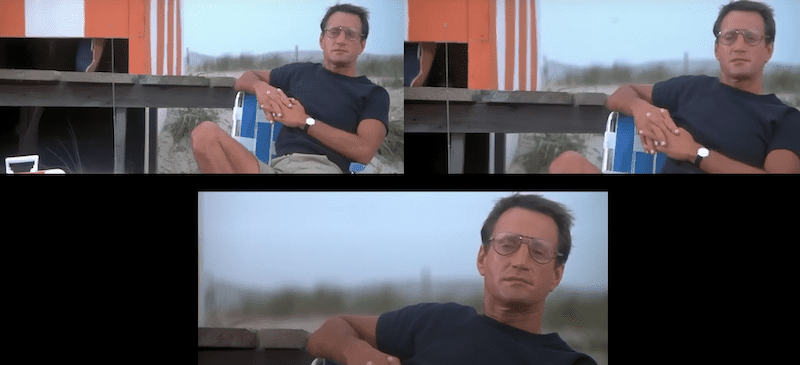
Welcome to The Queue — your daily distraction of curated video content sourced from across the web. Today, we’re watching a video essay that explores what axial cuts are and why director Steven Spielberg stopped using them.
You may not have heard the term “axial cut” before. But, if you’re a film fan, you’ve mostly likely seen one in action.
As its name suggests, an axial cut occurs when the camera stays on its axis while suddenly moving close or further away from its subject. It is, to be crass about it, a stylish merge between a jump cut and a zoom. It delivers the impression of impact while maintaining the illusion of continuity. It also accomplished the end result of a zoom — either closing in on a detail or moving back to take in the big picture — with far less time.
While its heyday was in the 1910s and 1920s, plenty of household names have made use of axial cuts, including Martin Scorsese and Steven Spielberg. Though, as the video essay below is quick to emphasize, the cut’s most famous patron is undoubtedly Akira Kurosawa.
Like split-diopters or dolly zooms, axial cuts are a wildly stylish move. They don’t work in every situation, and it’s up to the discretion of filmmakers to determine when to deploy them properly. For more on how the cut works and why and when directors might use it, here’s a video essay that breaks it all down:
Watch “Why Spielberg stopped using the Axial Cut”
Who made this?
This video essay on why Steven Spielberg stopped using the axial cut is by Wolfcrow. Their YouTube channel is dedicated to educating their audience on the ins and outs of cinematography. You can subscribe to them on YouTube here. And you can check out their website here.
More videos like this
- Here’s another video from wolfcrow on how lighting ratios can change the mood of a scene.
- And here’s their breakdown of the different lenses and focal lengths and how great directors use them to achieve different ends.
- Here’s wolfcrow with a fifteen-minute breakdown of aperture, shutter, and ISO, a.k.a. the “exposure triangle“
- And, if you’re an up-to-date photography rebel, you can check out Filmmaker IQ‘s video on the six reasons why we should probably ditch the exposure triangle, actually
- Eyes, shoulders, knees, and Dutch: here’s the ultimate thirteen-minute guide to camera angles
Related Topics: Cinematography, Steven Spielberg, The Queue

